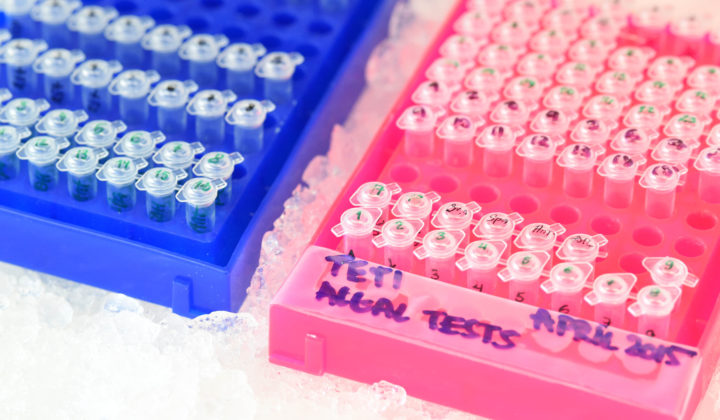Knowledge Resources
Laboratories
Program Research Infrastructure
The use and further development of key technologies is essential for competitive research. This leads to the need for a continuous (re)investment in laboratories and major appliances. Currently, the field of Next Generation Sequencing (NGS) is of particular importance, but other areas such as imaging procedures and mass spectrometry are also being refined continuously.
The trans-locational Senckenberg laboratory concept (Category I: basic laboratories required “on site;” Category II: laboratory infrastructure to be shared among institutes [e.g., Grunelius-Möllgaard Laboratory, SF]; Category III: special functions for facilities available across all Senckenberg institutions [e.g., SBiK-F Laboratory Center, Geochronology, aDNA Laboratory]) as well as the coordination with other Leibniz institutes and cooperating universities (e.g., Stable Isotope Facility as a joint lab with the Goethe University) play an important role in the purchase of major appliances and the provision of laboratory services and know-how.
Especially in the NGS sector, the large number of requirements arising from modern biodiversity research as well as the high dynamics of costs and applied methods become apparent. In the long run, the analysis of entire genomes will gain increasing importance; moreover, NGS methods are also important in the analysis of selected partial genomes or transcriptomes. In this field, the LOEWE-TBG, approved in 2017, supplements Senckenberg’s laboratory infrastructure and will be integrated in the company-wide laboratory concept.
In the course of the construction measures for the Senckenberg Research Institute and Natural History Museum in Frankfurt and with the move into the new buildings, the (laboratory) infrastructure at our Frankfurt location has been vastly improved. Important infrastructures used across all locations include: the SBiK-F Laboratory Center (SBiK-F), the Mesocosm Hall (SBiK-F, currently no longer Cat. III, but Cat. II), the Isotope Mass Spectrometry Laboratory (Joint Stable Isotope Facility, SBiK-F with the Goethe University Frankfurt), the LA-ICPMS Geochronology Laboratory (SNSD), the Molecular-genetic Laboratory with the aDNA System (SNSD), the Micro Computer Tomography and Scanning Electron Microscopy (SF, SaM, SHEP) as well as the X-ray and virtual 3D analyses of fossils (SF, SHEP), the Data and Modeling Center (SBiK-F), and the DNA Archive (SF).
Similar to the molecular laboratories, the additional infrastructures are not merely used for in-house cooperation but also when working with universities and other Leibniz institutes, as stipulated by the goals of the Pact for Research and Innovation 2016-2020.
Following the successful grant award for a computer tomography system (SHEP), the commissioning of a “CT Facility” (working title) operated jointly with the University of Tübingen is being planned for the year 2020 as an addition to the “Joint Labs” concept.
NGS technologies have become globally established for the study of systematic-phylogenetic issues. The challenge consists in being able to provide methodical know-how in the form of standardized procedures (“pipelines” or “workflows”) – in particular for the use of collection materials. The large data volume generated by NGS requires an increased bioinformatics expertise. In this regard, the Data and Modeling Center, LOEWE-TBG, as well as the cooperation with universities (e.g., Goethe University) play an important role. The Data and Modeling Center provides infrastructure for data storage, improves the visibility and accessibility of Senckenberg data, and constitutes an interface between bioinformatics and science for optimizing the Senckenberg databases and their use.





